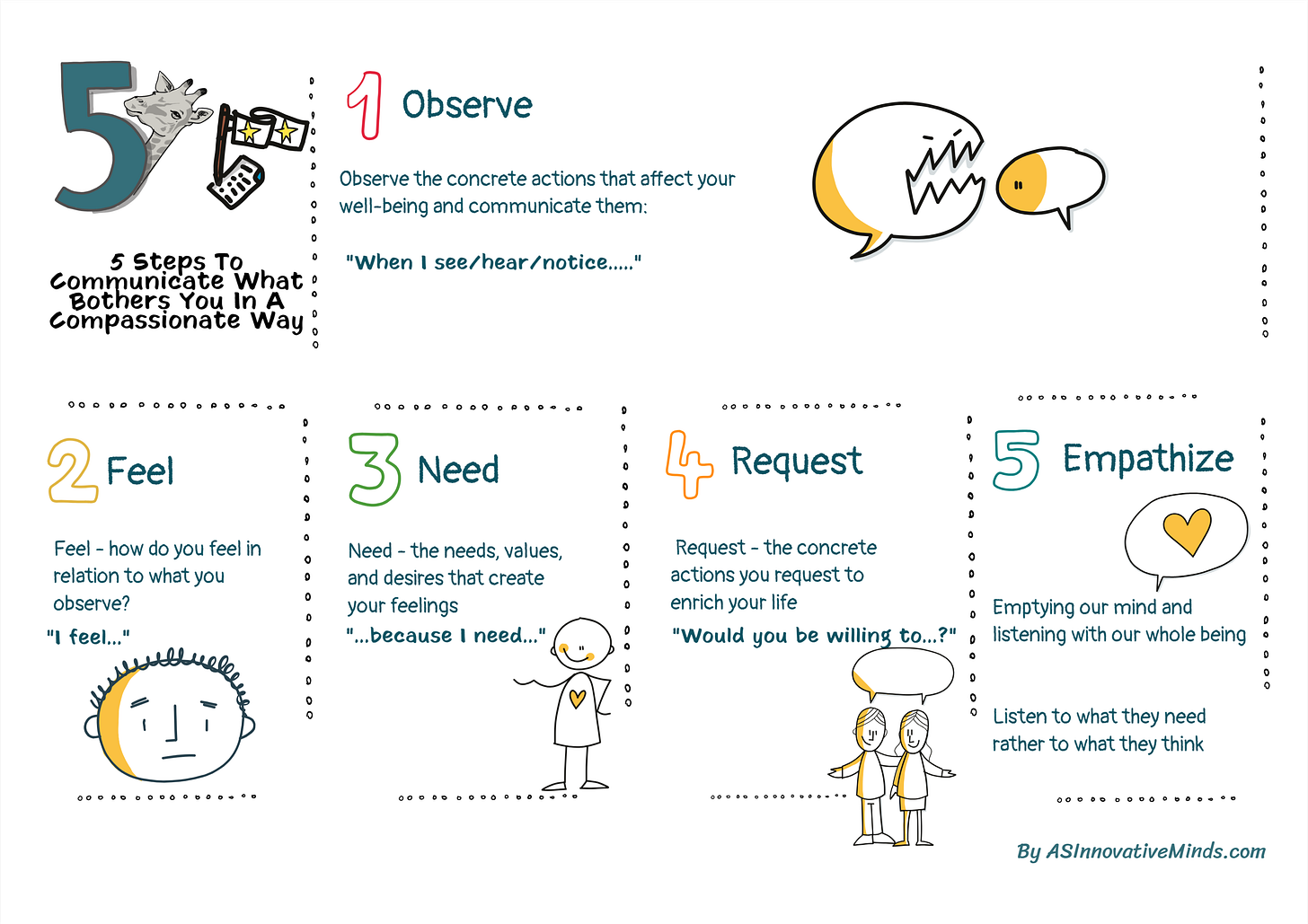5 Steps To Communicate What Bothers You In A Compassionate Way
Are you afraid of consequences if you express what you feel?
When we do not express what bothers us, those feelings stay inside us.
I heard in some trainings that in this case they can grow and get bigger, they are transformed in unused energy or provoke diseases. Whatever happens with them, I think you observed yourself what happens with them. Or not? If not, then it would be the moment to reflect upon this and listen to what your body says.
I know, it might be strange what I just wrote above, and above all what does this have to do with facilitation?
Well, if you are responsible for a team or facilitate a team where the feelings are not expressed on a regular base, the conflicts are probably quite loud when they happen or people are silently quitting. Can you relate to this?
This post is about five simple steps that you can use to express what bothers you in a compassionate way, without creating any conflict or an unsafe environment.
How is your brain working?
Something happens, a situation where you interact with someone and you are bothered by their behavior. Your brain is hijacked and you perceive that person as a threat to your safety.
Your brain does not see the difference between the person, behavior, and what could have triggered that.
The natural reaction is to run away from the potential threat. The brain gives you the signal you are not safe to deal with it.
If you manage to regulate your emotions and come back to increased cognitive performance, you will be able to face the fear and have compassionate communication about what bothers you.
What are the 5 steps to communicate what bothers you in a compassionate way?
1. Observe the concrete actions that affect your well-being
“When I see/hear/notice…”
2. Feel - how do you feel in relation to what you observe?
“I feel…..”
3. Need - the needs, values, and desires that create your feelings
“….because I need…..”
4. Request - the concrete actions you request to enrich your life
“Would you be willing to….?”
5. Empathize
✔️ Emptying our mind and listening with our whole being
✔️ Listen to what they need rather than to what they think
Visual to download - created for you!
I have created for you a PDF to download with these steps in case you want to have it by hand and also share it with your colleagues/friends.
Bottom lines:
How about letting what bothers you out? How about compassionately communicating this, and creating a safe environment to do so?
Simple steps on how to do this.
A new template in Miroverse for you
You can find the template for the reflection in Miroverse and use it as many times as you need. The board as a talk track included a video showing you how to use it.
Please give it some love ❤️ if you like it in Miroverse:)



Really appreciated this, the step-by-step structure makes the practice so accessible. One nuance that the author I collaborate with often emphasizes is taking a moment to pause and connect internally before expressing what bothers us. That little pause shifts the tone from reactivity to grounded self-connection.
He recently shared a short practice on this exact step, in case it adds to the tools you’ve laid out here: https://cenn.substack.com/p/compassionate-communication
Thanks again for the clarity of this piece, I can see it being useful in so many hard conversations.